All Images
News Release 11-104
Mars: Red Planet's Rapid Formation Explains Its Small Size Relative to Earth
Mars developed far more quickly than our blue planet
This material is available primarily for archival purposes. Telephone numbers or other contact information may be out of date; please see current contact information at media contacts.
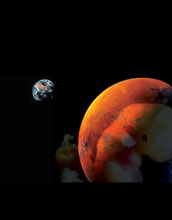
Mars is a a planetary embryo that never collided with other embryos to form an Earthlike planet.
Credit: Christopher Leather, University of Chicago
Download the high-resolution JPG version of the image. (475 KB)
Use your mouse to right-click (Mac users may need to Ctrl-click) the link above and choose the option that will save the file or target to your computer.
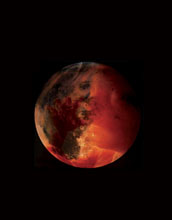
Mars likely developed in two to four million years; Earth's growth was over 50 to 100 million years.
Credit: Christopher Leather/University of Chicago
Download the high-resolution JPG version of the image. (417 KB)
Use your mouse to right-click (Mac users may need to Ctrl-click) the link above and choose the option that will save the file or target to your computer.
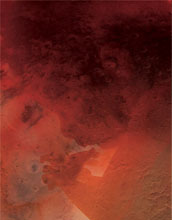
Mars' age was determined by using the radioactive decay of hafnium to tungsten in meteorites.
Credit: Christopher Leather/University of Chicago
Download the high-resolution JPG version of the image. (810 KB)
Use your mouse to right-click (Mac users may need to Ctrl-click) the link above and choose the option that will save the file or target to your computer.
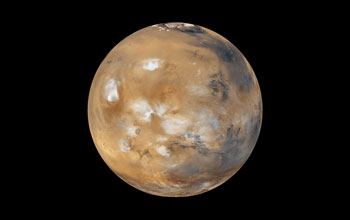
Mars is some 4,221 miles in diameter; Earth's diameter is 7,926 miles, about twice that of Mars.
Credit: NASA
Download the high-resolution JPG version of the image. (555 KB)
Use your mouse to right-click (Mac users may need to Ctrl-click) the link above and choose the option that will save the file or target to your computer.
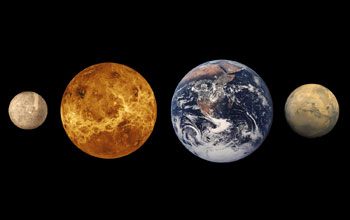
The relative size of the inner planets of our solar system: Mercury, Venus, Earth and Mars.
Credit: Lunar and Planetary Institute
Download the high-resolution JPG version of the image. (500 KB)
Use your mouse to right-click (Mac users may need to Ctrl-click) the link above and choose the option that will save the file or target to your computer.


